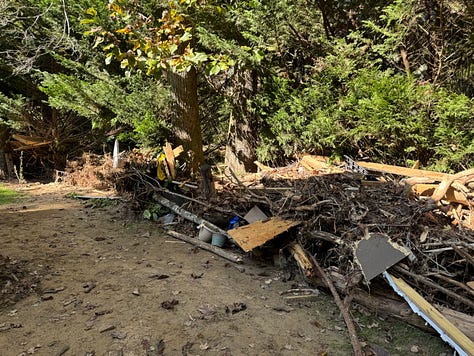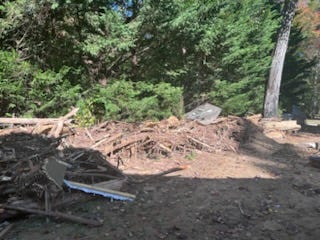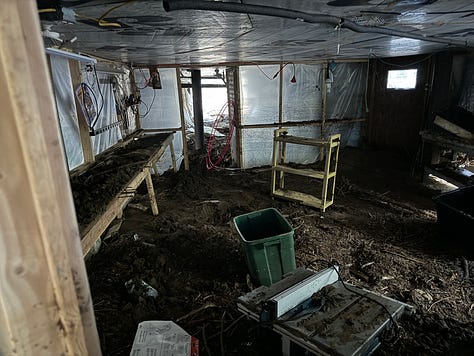Don’t Be Powerless: How to Prep and Stay Safe When Storms Hit
Stay powered and connected during storms: expert tips on batteries, generators, apps and pet safety plus a quick checklist to prepare tonight.
As hurricane season ramps up along the Atlantic and Gulf coasts — from Florida and Louisiana to Texas and the Carolinas — forecasters warn the odds of an above-normal year are high. Wildfires are burning earlier and hotter out West, violent wind storms are snapping lines across the interior, and winter’s ice and snow aren’t far behind.
For millions of Americans, watching the weather forecast these days feels like an endless loop of desperate doomscrolling. Will the next refresh tell you to pack a bag and leave, hunker down, or brace for the “once-in-a-lifetime” storm that now seems to arrive every season?
What actually helps when the sky — and the rest of the world — goes sideways? Generators.
Portable backup generators are the talk of modern storm tech prep. Sure, flashlights and extra drinking water are important, but the true test of “we’ll get through this” versus “this is catastrophic” can come down to keeping essential power running when the grid can’t.
That’s what happened to 64-year old retired nurse Donna Niebauer when, over the course of one terrifying night, Hurricane Helene ravaged her peaceful mountain community of Burnsville, North Carolina and cut off power for more than two months.
“I felt like Dorothy in the Wizard of Oz. You know, when she's sitting on her bed and everything starts flying by her window? Propane tanks were spinning by, the water [from the nearby South Toe River] was rising. We heard crashing and banging and saw our neighbors’ houses start breaking apart and floating by,” Niebauer told me from her home in the Blue Ridge Mountains. “We stayed here without power. It was so cold that you could see your breath. We ate everything left in our freezer that we could cook on the grill outside. There was no communication. Nobody knew if we were dead or alive,” she told me.
Still, Niebauer says they are the lucky ones. They survived. More than 100 others in their community did not.
Their saving grace? An international relief organization called Samaritans Purse used Black Hawk helicopters to fly in massive portable gas-powered generators.
“I don’t know what we would have done without that. I really don’t. You never imagine being so cut off from the rest of the world,” Niebauer added.






“People think outages are temporary until they aren’t,” says Carol Friedland, director of LaHouse at LSU and a longtime building-science specialist who trains housing professionals on disaster resilience. “But this is the best case scenario — that you don't have power and you’re basically camping in your house,” she warned.
How do I safely use a generator during a storm?
I’ve been tuning our home setup since we moved to the Pacific Northwest almost four years ago, after a wind storm knocked out power for two weeks. The longest we’ve been off-grid is three days, but with two of us working from home and elderly parents under our roof, we plan for longer.
Our backbone is the Generac GP9500E Tri-Fuel portable (the main benefit is that it runs on gas, propane, or natural gas, and retails for around $1,100–$1,300). The last time power was out for three days during a windstorm, we started it up with the push of the electric start button, and it ran for about 12 hours before we had to top it up. A tri-fuel option gives you the most flexibility, but we’ve also used the Generac GP8000E as a mainstream workhorse as well. These all let you power on your essentials during an outage to stay comfortable and connected.
We also keep a suite of battery power stations and portable banks for immediate, quiet support: phones, laptops, routers, CPAPs, and a small fridge. Batteries buy breathing room; fuel generators buy runtime and the startup watts needed for motors, such as sump and well pumps.
San Francisco Bay Area contractor Sam Farnsworth, who has perfected backup power many clients as well as for himself due to wildfires, earthquakes, and rolling blackouts in his area put the trade-offs plainly: “The phones are going to work, the internet is going to be connected, the fridge is going to stay cold for a couple days…,” he said of portable generator setups. But he cautioned that battery-only systems have serious limits: “With solar, it doesn't power up as fast as you're drawing it. It'll sort of give you a little bit more time, but it's a losing battle that way.”
Carol Friedland agrees. Practically speaking: if your checklist is mostly phones and a CPAP, a mid-size electric battery station is civilized: quiet, indoor-safe, and instantly useful. If you need to run a refrigerator, sump pump, or multiple circuits for days, choose a fuel generator sized to your actual load and couple it with a transfer switch.
Best practice? Friedland says to pair them; batteries for instant failover and sensitive gear, a generator for the marathon.
What small gadgets actually help during a storm?
Beyond generators, you really don’t need a bunker full of gear. You need the right little tools, ready to go. Here’s our own handy, tried and true checklist:
Pocket power: Tiny power banks like the newest Anker Nano or Nimble CHAMP Series 2 (both are 10,000 mAh) are my top go-to’s. Both are smaller than a deck of cards, charge two devices at once, and Anker’s latest includes built-in or retractable cables so you’re not hunting for cords during an outage. I keep one in my go-bag and one in the car.
Hand-crank radio: The Midland ER310 gives NOAA alerts, acts as a flashlight, and can crank-charge a phone when there’s no grid or cellular signal. It’s not glamorous; it’s life insurance.
Pet safety: Did you hear about that dog rescued in the Texas flooding? A GPS tracker like the Tractive Collar sends real-time location updates straight to your phone. Another go-to for pets — FidoAlert and Flew The Coop joined forces to create a free, nationwide pet-preparedness program you can join in under two minutes (no credit card required). It provides Fido ID tags for every pet in the household, real-time SMS alerts if a pet is reported missing, a “pet preparedness playbook” with storm and evacuation tips, and emergency-contact sharing into a 1,000+ member lost-pet alert network.
For off-grid communication: Garmin inReach Mini 2 or ZOLEO let you send texts and trigger SOS even with no bars.
Apps: set up FEMA for official alerts, Watch Duty for volunteer-verified wildfire updates, Zello for push-to-talk neighborhood communication, PulsePoint for CPR/AED alerts where supported, GOES Health for offline medical guides, and IQAir/AirVisual for air-quality monitoring during smoke events.
What can I do right now to prepare for a storm/disaster?
Prep is mostly boring work that pays massive dividends when it matters the most. Here’s a simple list that you can get done in a night or weekend:
Charge a phone and two power banks and stash one in the car.
Photograph and cloud-backup your insurance documents and IDs.
Label the circuits you want the generator to run.
Test your battery station and the generator once a year.
Keep a printed list of emergency numbers in a waterproof bag.
Friedland also says now’s the time, “to check your insurance policies. Make sure your homeowners' insurance is in force. Look at what your deductible is, because they use these percentage deductibles, and it's a percentage of the value of your home, not the percentage of the damage that you experience.” She also says that if you have to rebuild, spend some of the recovery money on resilience upgrades like fortified roofing, so you’re less likely to be in the same predicament when the next storm hits.
When the sky goes dark or your smartphone's siren starts blaring, preparation doesn’t make storms pleasant, but it does keep the lights on, the meds refrigerated, and the people who depend on you safer. That’s the work that matters.
####



